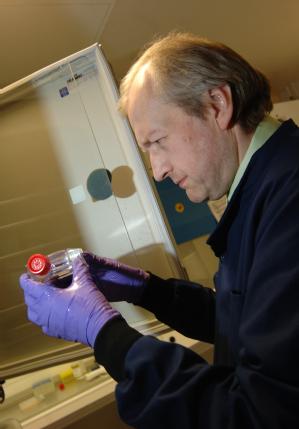Warwick, United Kingdom
September 15, 2014
A new generation of new superfoods that tackle heart disease and diabetes could be developed following research into a protein that helps keep cells in our bodies healthy.
Researchers at the University of Warwick found that the protein, called Nrf2, continually moves in and out of the nuclei of human cells to sense the cell’s health and vitality.
When Nrf2 is exposed to threats to the cell’s health it oscillates faster and activates an increase in the cell’s defence mechanism, including raising the levels of antioxidant.
The researchers, from the University’s Warwick Medical School, successfully increased the speed of Nrf2’s movement by artificially introducing health beneficial substances – potential components of new superfoods.
The beneficial substances comprise broccoli-derived sulforaphane and quercetin, which is found in high-levels in onions.
The team used these insights to develop new food supplements, which are currently being trialled to decrease risk of developing diabetes and heart disease.
Published by Antioxidants and Redox Signalling, the research investigated the ways in which compounds in fruit and vegetables keep humans healthy.
The research team are the first to record the continual movement cycle of Nrf2, which sees the protein oscillate in and out of the cell nucleus once every 129 minutes. When stimulated by a health beneficial vegetable-derived substance Nrf2’s cycle sped up to 80 minutes.
 Lead researcher Professor Paul Thornalley (pictured) says, “The way Nrf2 works is very similar to sensors in electronic devices that rely on continual reassessment of their surroundings to provide an appropriate response”.
Lead researcher Professor Paul Thornalley (pictured) says, “The way Nrf2 works is very similar to sensors in electronic devices that rely on continual reassessment of their surroundings to provide an appropriate response”.
Discussing the health benefits of the research Professor Thornalley argues:
“The health benefit of Nrf2 oscillating at a fast speed is that surveillance of cell health is increased when most needed, that is, when cells are under threat. By understanding how this process works and increasing Nrf2’s speed without putting cells under threat, new strategies for design of healthier foods and improved drugs can be devised. Current designs may have selected substances with suboptimal if not poor health benefits in some cases.”
Commenting on the research, Professor Andreu Palou, coordinator of the EU-funded BIOCLAIMS research programme said “A main nutritional challenge in Europe is to substantiate the beneficial effects of foods that are advertised to the consumers. The approach of the group of Prof Thornalley is opening a fascinating new window."
The research was funded by the Biotechnology and Biosciences Research Council UK (BBSRC) Diet and Health Research Industry Club (DRINC) and the EU Framework Programme-7 BIOmarkers of Robustness of Metabolic Homeostasis for Nutrigenomics-derived Health CLAIMS Made on Food (BIOCLAIMS) project.
The research was performed by collaboration between the Medical School, Life Sciences and Systems Biology Centre at the University of Warwick: Drs Mingzhan Xue, Hiroshi Momiji, Naila Rabbani, Guy Barker, Till Bretschneider and Tony Shmygol, and Profs David Rand and Paul Thornalley.